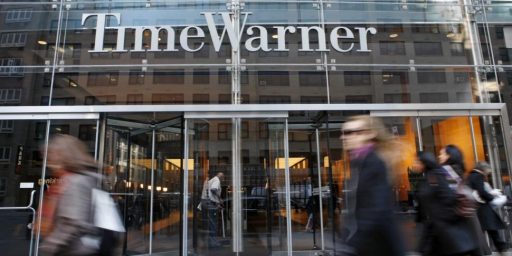London Times Web Traffic Falls 66% After Paywall Goes Up
It’s only been 17 days since Rupert Murdoch’s News Corporation put the website for the Times Of London behind a paywall, and traffic has already dropped like a rock:
According to data from Experian Hitwise, which charts Internet traffic, visits to The Times of London and The Sunday Times’ Websites have dropped by 66% since parent company News International put those sites behind paywalls on July 2.
Some media pundits had predicted the site would lose as much as 90% of its traffic.
The drop might have been lessened by an introductory charge of £1 for the first 30 days. News Corp.’s Rupert Murdoch wants to charge £1 per day for access to the site, or £2 for a week.
It will be interesting to see what happens to traffic after the introductory price ends. If this initial period is any indication, it won’t be good.
What makes this news seem more grim, though, is the fact that it’s part of a trend that started when the paywall was announced, but before it went into effect:
In the five-week period before the paywall was erected, traffic fell 58% between May 22 and June 26, according to E&P’s former sister site, Mediaweek.
Rupert Murdoch thinks that he can make pay-for-use news viable on the Internet, and companies like The New York Times are watching him to see if he succeeds. So far, it’s not looking good.
Update: The Guardian is out with a report this morning that makes the situation seem even more grim:
Unregistered users of thetimes.co.uk are now “bounced” to a Times+ membership page where they have to register if they want to view Times content. Data from the web metrics company Experian Hitwise shows that only 25.6% of such users sign up and proceed to a Times web page; based on custom categories (created at the Guardian) that have been used to track the performance of major UK press titles online, visits to the Times site have fallen to 4.16% of UK quality press online traffic, compared with 15% before it made registration compulsory on 15 June.
These figures can then be used to model how this may impact on the number of users hitting the new Times site. Based on the last available ABCe data for Times Online readership (from February 2010), which showed that it had 1.2 million daily unique users, and Hitwise’s figures showing it had 15% of UK online newspaper traffic, that means a total of 332,800 daily users trying to visit the Times site.
If none of the people visiting the site have already registered, the one-on-four dropout rate means that traffic actually going from the registration site to the Times site is just 84,800, or 1.06% of total UK newspaper traffic – a 93% fall compared with May.
However, some have registered: Dan Sabbagh, formerly the media correspondent for the Times, suggests that about 150,000 users registered for access to the Times and Sunday Times while they were free, with 15,000 apparently agreeing to pay money.
(…)
There are approximately 150,000 Times print subscribers who get a free online registration, but if the estimated 15,000 daily online users who agreed to pay opt for the £2 a week deal, the paywall will generate £120,000 a month – £1.4m a year.
I’m willing to guess that the site was generating more than that in advertising revenue when access was free.





I’ve been predicting for years that such efforts would fail, especially for outlets, like the Times, that offer little to differentiate themselves from the crowd.
Still, two points:
1. I’m skeptical of the ability of external monitors to gauge website traffic in general. It’s got to be geometrically harder to do so for gated content.
2. Given the fixed costs of operating the site, I’m dubious, but it’s conceivable that a 2/3 drop in traffic could be a significant increase in revenue if the other 1/3 are paying and 0/3 were paying previously.
“2. Given the fixed costs of operating the site, I’m dubious, but it’s conceivable that a 2/3 drop in traffic could be a significant increase in revenue if the other 1/3 are paying and 0/3 were paying previously.”
For now. It’s also conceivable that they just became 2/3 less attractive to advertisers.
That 66% figure might be misleading. It just says that that’s the drop-off in visits to the site, meaning that a lot of people who are still visiting may be just clicking on the link to the main page, then leaving once they find out about the paywall without paying anything.
I’m skeptical that more than a small fraction of those 1/3 are actually paying anything, for the reason I stated above.
I’m skeptical that more than a small fraction of those 1/3 are actually paying anything
Me too. I’m just saying that, minus more data, it’s at least conceivable that this move wasn’t a debacle. My strong guess going in, however, was that it would be.
Totally agree Jim. Murdoch is out to lunch if he thinks anyone is going to pay to read the Times of London online when Brits have the Guardian, BBC, Daily Mail et al as alternatives. The only reason the Journal and the FT can make it stick is the very specialized nature of their journalism and Murdoch seems intent on throwing that away at the Journal. I’ve read it for nearly 50 years but most of the info is now available elsewhere online and half the paper is now given to political reporting which I can read anywhere. I’m seriously thinking about dropping my old fashioned print sub which believe me is an event in our household.
FYI,
I’ve updated the post with some news from this morning’s Guardian that makes the situation seem even more grim than the initial report.
If their analysis is correct, the paywall is only generating 1.4 million pounds a year.
Disclosure: Almost all my income comes from Uncle Rupert.
I don’t think Mr. Murdoch gets the web at all. I don’t think he’s trying to get it. I think his mission is to save the physical newspaper, not to build a successful online replacement. The man is 79 years old, he’s one of the great media barons, but I doubt his focus is strongly on the future. I suspect he’s calculated that his own web version is the biggest competitor to the paper newspaper and he acted on that basis.